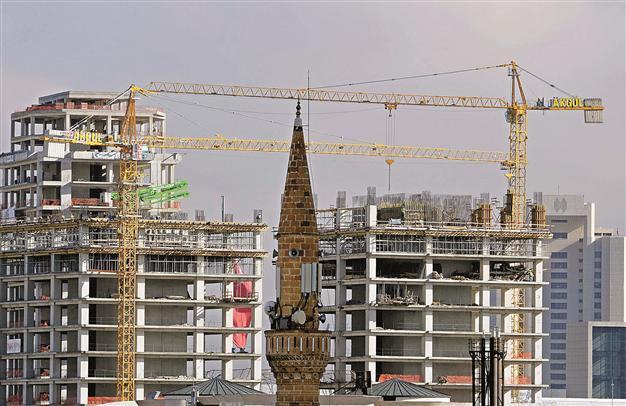Risk of a housing price bubble in Turkey: A commentary
Yener Coşkun, Arvydas Jadevicius

Those who like computer games may be familiar with “Bubble Trouble” – a fun game for children. The mission is to pop all the bubbles in order to advance to the next level. When one bubble pops, it splits into two smaller ones, which are subsequently split further until they disappear. Sounds easy, doesn’t it?
Well, this may not be the case if you think about housing bubbles, and Turkish housing bubble in particular. The nation’s housing market has become a subject of debate among the national and international property market communities, with some opposing views having been presented. In its recent report, Cushman & Wakefield (a global real estate services firm) did not see Turkish housing as being in the “bubble.” Likewise, a number of Turkish academics also indicated that national housing is following a normal path.
However, commentators including Nouriel Roubini, Jesse Colombo and Landon Thomas Jr. are all reporting that the Turkish housing market is in the “bubble.” One may, therefore, question whether large house price inflation is the normal course of national market development, or an anomaly which should be corrected before it is too late.
Overall, the Turkish housing market has matured successfully over the last decade. The volume of housing loans have increased from $200 million to $51.4 billion between 2002 and 2015. Four million dwelling units were built from 2002 to 2014 and 6.3 million construction permits were issued over the same time period.
According to the Central Bank of Turkey, real house prices grew 34, 68, 13, and 25 percent in Turkey, Istanbul, Ankara, and İzmir, respectively, from January 2010 to January 2015.
Economists attribute this house price growth to both positive socio-economic fundamentals, as well as excessive optimism in the market. Likewise, buyers see current house price inflation as a rational course of market expansion. The other perception among buyers is that housing is the best possible investment. The narrative goes that “house prices will always go up.”
Having just lived thought one of the largest property market crises in history, current market developments in Turkey seem like déjà vu. Wasn’t the previous crisis triggered by rising indebtedness, ever-growing prices, extensive construction levels and the belief that prices always go up?
The question is, therefore, whether this house price growth indicates a bubble and, if so, can its burst trigger housing market-wide and economy-wide risks to the economy of Turkey?
Notwithstanding its economic strength, Turkey is, however, classified as one of the “Fragile Five” countries. Its key weaknesses are large private and public debt, a significant current account deficit, declining industrial production, growing unemployment, a weakening GDP and a depreciating currency. Combined with excesses in the housing market, all this may suggest that the Turkish economy will face financial difficulties going forward.
However, correction in the housing market may not be as contagious as one may think. First, though mortgaged house sales have been advancing steadily in recent years, high interest rates (11.6 percent on May 22), average loan maturity (7.5 years) and income inequality hardly allow for the housing credit-to-GDP ratio to reach the 6.5 percent threshold.
Second, mortgage credit has been mainly issued to mid/upper-income individuals. Due to this somewhat “discriminative” mortgage access structure, a total housing market decline is unlikely. Third, the lack of mortgage securitization and mortgage-backed derivatives suggests that the secondary mortgage market risks are also minimal. What is more, a high LTV (Loan-to-value) ratio (75 percent) and the Banking Authority’s imposed lending standards would be at work in minimizing downturn risks.
Taken together, even in the worst-case scenario, the bursting of the perceived housing bubble won’t be as disruptive to the national economy. Although Turkish house price growth may not totally reflect economic fundamentals in recent years, this does not necessarily imply “generalized bubble risk.” A future price correction is likely to affect speculators, credit-holders and credit-driven construction companies. A spillover effect is unlikely to be contagious.
However, if the bubble game progresses to the next level, a greater oversight will be needed. Those responsible for shooting bubbles will have to improve their skills; otherwise, it will be game over.
 Those who like computer games may be familiar with “Bubble Trouble” – a fun game for children. The mission is to pop all the bubbles in order to advance to the next level. When one bubble pops, it splits into two smaller ones, which are subsequently split further until they disappear. Sounds easy, doesn’t it?
Those who like computer games may be familiar with “Bubble Trouble” – a fun game for children. The mission is to pop all the bubbles in order to advance to the next level. When one bubble pops, it splits into two smaller ones, which are subsequently split further until they disappear. Sounds easy, doesn’t it?